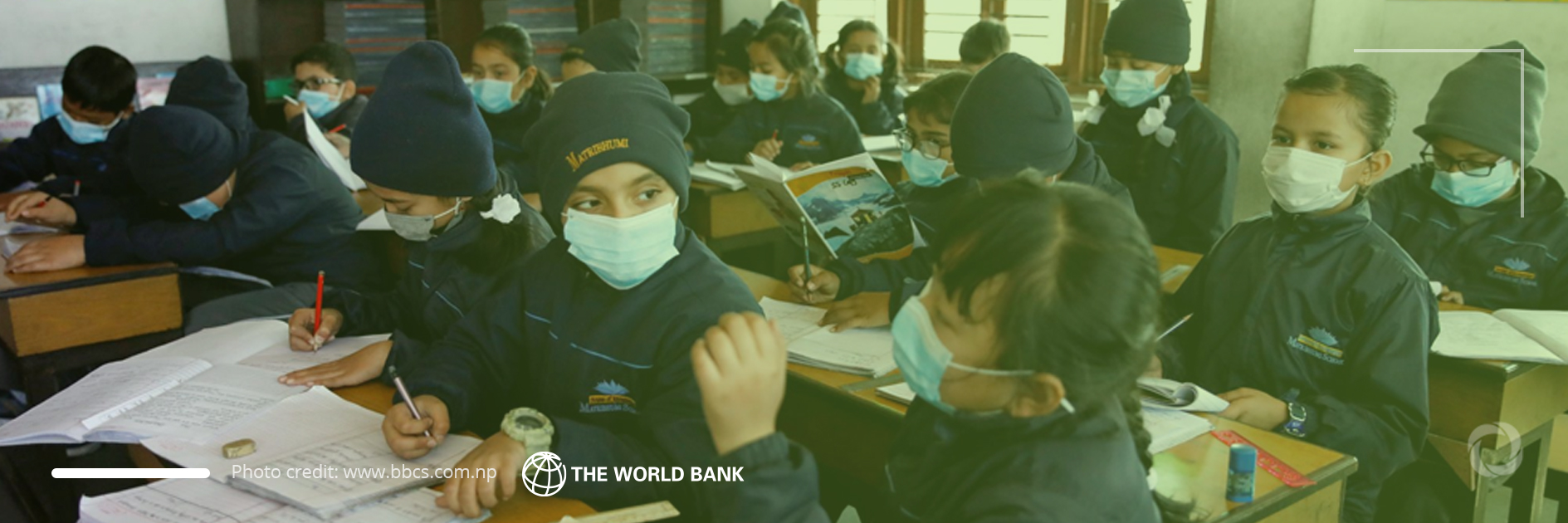In view of the fact that Nepal’s education sector needs to be more inclusive and equitable in terms of access and learning outcomes and the healthcare sector needs to be robust and accountable, the World Bank‘s Board of Executive Directors has approved two separate financing agreements worth US$50 million each to strengthen both these sectors.
Approved on July 8, this additional financing will support the implementation of the Government of Nepal (GoN)’s flagship School Sector Development Program (SSDP) and efforts to improve efficiency in the public resource management systems of Nepal’s health sector by supporting the implementation of Nepal’s Health Sector (NHS) in the one-year extension phase.
This funding aims to support human capital development, particularly for the poor and vulnerable populations, and to contribute to the COVID-19 recovery.
Stating that strengthening Nepal’s school sector and building resilient health systems are critical for human capital development, Faris Hadad-Zervos, World Bank Country Director for Maldives, Nepal, and Sri Lanka remarked, “Through this support to the GoN, we aim to mitigate learning losses and ensure that children return to schools, and improve the efficiency of spending and fiscal space for delivering quality and accountable healthcare services to contribute to Nepal’s COVID-19 recovery.”
The additional financing to the health sector aims to:
- provide critical financing in a resource-constrained COVID-19 environment to build resilient health systems
- support the implementation of Nepal’s Health Sector Strategy in the one-year extension phase
- prepare Nepal to implement its next health sector strategy
- sustain the gains made thus far in public resource management reforms of the health sector.
Sangeeta Carol Pinto, the World Bank’s Program Task Team Leader, commented that the additional financing would continue to provide incentives to address the bottlenecks and thus improve public resource management in the health sector and promote transparency and accountability in the system by linking payments to results.
The additional financing to the SSDP aims to:
- reduce dropouts and mitigate learning losses by supporting pro-poor targeted scholarships, pro-science scholarships, and catch-up programs
- lay the foundation for the next school sector successor program in two areas, i.e., assessment and data systems, and help to create the fiscal space to fill the gap in financing the GoN’s flagship program
- support the implementation of federalism in Nepal by aligning the program with the federal structure to improve efficiency and the achievement of results.
Karthika Radhakrishnan, the World Bank’s Program Task Team Leader, noted that learning losses and drop-outs are higher among children coming from poorer socio-economic backgrounds. “The additional financing will support catch-up programs to mitigate learning losses, and support children from poorer socio-economic backgrounds through pro-poor targeted scholarships,” she said.
Although over the last two decades, the net enrolment rate at primary schools of Nepal has risen to 97%, the country still faces various barriers such as poverty, social exclusion, disability, migration, child labor, and gender bias that prevent children from attending schools. According to UNICEF, 770,000 children aged 5-12 years are still out of school whereas attendance in early childhood education is still low at 51%.
The COVID-19 school closures have had a negative impact on overall teaching-learning activities. The Economic Survey (2019-2020) carried out by the Ministry of Finance of Nepal found that the majority of schools do not have internet connectivity while only 12% of public schools have the capacity to offer information and communication technology-based learning.


